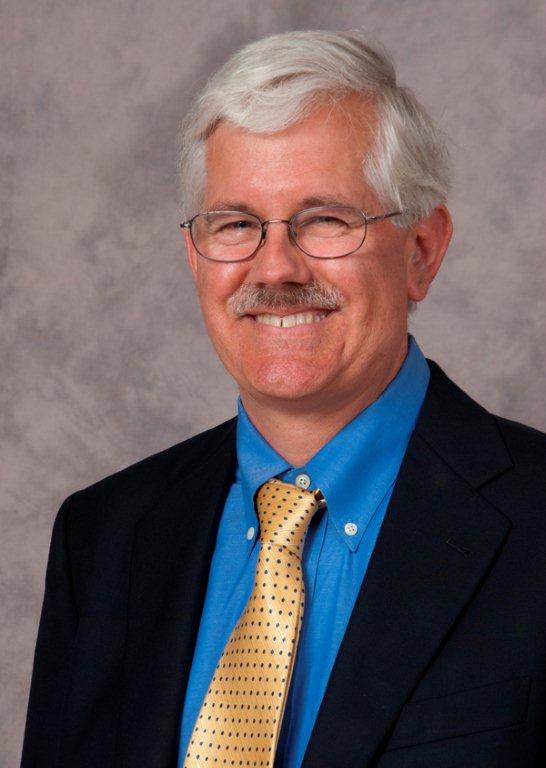SU's Adams Earns Smithsonian Fellowship
 SALISBURY, MD---Say “Silicon Valley” and most people think of computers, venture capitalists and consumer electronics.
SALISBURY, MD---Say “Silicon Valley” and most people think of computers, venture capitalists and consumer electronics.
All those things may be synonymous with the world’s tech capital today — but at the inception of the technology epicenter, there wasn’t a microchip to be seen.
Dr. Stephen B. Adams of the Management and Marketing Department of Salisbury University’s Franklin P. Perdue School of Business is seeking to capture the zeitgeist of those early years in his forthcoming book Before the Garage: The Beginnings of Silicon Valley, 1909-1960.
The Smithsonian National Museum of American History recently recognized the importance of Adams’ research, naming him one of four 2015-2016 Fellows at the Lemelson Center for the Study of Invention and Innovation. During this semester, he served a residency at the center, where he delivered a public lecture as part of its colloquium series (a video of the presentation is available at http://invention.si.edu/file/2041).
“Along with its physical holdings, the Smithsonian has incredibly knowledgeable people,” said Adams. “It’s a real scholarly community.”
During his fellowship year, which continues through next May, he is exploring the collections of the Smithsonian, as well as other collections in the Washington, D.C., area such as the Library of Congress and National Archives.
For Adams, one of the most important collections within those institutions has been an archive on the history of radio compiled by U.S. Navy expert radio aide George H. Clark. In the early 20th century, Clark assessed the capabilities of potential suppliers to enhance communications as the navy expanded its fleet and spanned the globe with its bases. One such supplier was the Federal Telegraph Company, Silicon Valley’s first major tech startup.
During the Valley’s first 50 years, the federal government acted as “price insensitive lead customer” for electronics businesses like Federal Telegraph, Hewlett-Packard and Fairchild Semiconductor (the Valley’s first successful chip company), helping keep them afloat in their formative years, Adams said.
But with most of those territorial and military decisions being made in Washington, D.C., and on the East Coast, how did a region in California, on the other side of the country, become the nation’s technology capital?
“The location matters a lot,” said Adams, noting that gold, not silicon, first put the area on the map.
With the California Gold Rush of the mid-19th century, San Francisco quickly grew from a town of fewer than 1,000 people to become America’s largest financial center west of the Mississippi River. Decades later, banks that were built on the mineral bonanzas of the West financed many of the tech startups that were the predecessors to Apple, Google and many other brands familiar today.
Orchards and farms represented another major endowment. Agriculture and extractive industries such as oil and mining represented the major industry for the region on the eve of the 20th century, but being located so far away from East Coast manufacturing centers represented both a problem and an opportunity for the West.
“You don’t think of agriculture and extractive industry as being high-tech, but because Californians were so far away from most manufacturers of farming and mining equipment, they often had to make their own,” Adams said.
This led to a boom in innovation, an enhancement of the region’s wealth and a stable of patent attorneys prepared for the next big thing – which turned out to be communications electronics. San Francisco bankers and lawyers, the federal government, and two major Bay Area research universities (Stanford and University of California, Berkeley) served as a support system for tech-based entrepreneurship.
“It wasn’t just a collection of garages,” Adams said. “Before the garages could mean anything, there had to be an ecosystem to nurture entrepreneurial ventures.”
The basics of that ecosystem changed in the 1960s, with the arrival of venture capital firms and a shift in focus from government contracts to consumer products including calculators, video games and personal computers, he said. This particular stage of Silicon Valley’s history is currently showcased in the Smithsonian’s National Museum of American History exhibit “Places of Invention.”
Adams pointed out that housing this display was particularly appropriate given the history of the museum itself. Its original name, upon opening in 1964, was the National Museum of History and Technology.
For more information call 410-543-6030 or visit the SU website at www.salisbury.edu.
